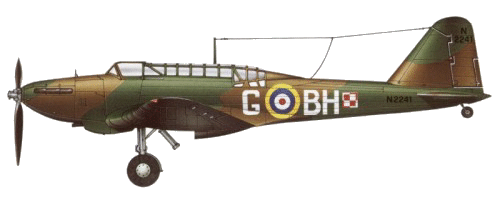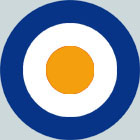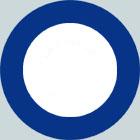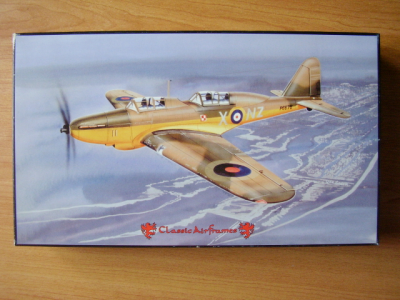Le Fairey Battle
English Translation
le Fairey Battle a été un des avions principaux du début de la deuxième guerre mondiale
son rôle est surtout connu durant la campagne de France au printemps 1940 ou les squadrons de Battle subir des pertes énormes lors des attaques désespérées contre la tête de pont allemande.
Historique.
Le Fairey Battle a été désigné pour remplacer le Hawker Harten tant que bombardier léger. En 1933 le ministère de l'air britannique émet le souhait d'avoir un avion monomoteur qui puisse porter de bombes de 500 kilos sur 1600 km à 320 km heure. Or il est connu qu'à 1933 aucun moteur est capable d'une telle performance malgré cela en avril 1933 la fiche technique de cet avion sort sous le nom de P27/32.;
La firme Fairey avec à sa tête CR Fairey peu convaincu par cette fiche technique se lance dans la compétition tout en émettant certaines réserves et en proposant des alternatives toutefois le projet de Fairey,et accepté le 11 juin 1934
Fairey, propose une machine vraiment moderne l'avion a aile basse entoilée a une silhouette d'un chasseur
De plus Fairey est un train de mettre au point une série de moteurs d'avions mais aucun ne reçoit l'approbation officielle ce qui fait que l'avion est motorisé par un Rolls Royce Merlin il peut porter 120 kilos de bombes dans une soute à bombes et deux autres sous les ailes équipage est de trois hommes le pilote le radio opérateur sous une canopée vie très et le l'observateur à l'arrière du cockpit Le Battle possède un armement défensif limité à un d'importantes une seule mitrailleuse303 inch Browning dans l'aile droite on peut toutefois monter à l'arrière du cockpit une mitrailleuse Vickers “K” afin d'assurer la défense du secteur arrière
le premier prototype vole le 10 mars 1936 il est très près de la fiche programment car il a une vitesse de pointe de 412 km heure un rayon d'action 2500 km avec une charge militaire de 455 kilos mais pour 1936 il est déjà obsolète. En effet un autre avion est entraîne d'être construit issu de la fiche programme de 1933 le Vickers Wellington qui est vraiment en avance pour son époque
Aussi face à ce problème la RAF décide de ne pas commander beaucoup d'avions de ce type Mais la montée de la menace allemande avec le rééquipement de la Luftwaffe contraint les dirigeants anglais à la course aux armements aérienne afin de maintenir une parité numérique avec ceux-ci 2201 Battle seront construits pour eux la RAF1,155 par Fairey, 1029 par Austin car Company et un par Hayes, toutes les commandes seront honorées à la fin de 1939.
La majorité de ces avions sera motorisée avec le Merlin III d'où leur nom de Battle III faisant référence au type du moteur le premier avion de série vola le 14 avril 1937 heures et le mois suivant le 63e Squadron sera le premier à être transformé sur ce type d'avion
Description
Le Fairey Battle est un avion monomoteur bombardiers de jours monoplan qui a été conçu par l'équipe dirigée par Marcel Lobelle entre 1932 et 1133
.jpg) |
le silhouette moderne il est motorisé par un moteur Merlin C. de 890 chevaux .Selon que les avions étaient motorisés avec les moteurs auront le rôle se Merlin I , II III ou V ils furent appelés Fairey Battle I II III ou V
Son équipage à l’origine comprenait 2 hommes un pilote et un observateur par la suite un radio opérateur et en même temps mitrailleur mettant en oeuvre une mitrailleuse Vickers K 03 103 inch en montage arrière . Une autre mitrailleuse Browning se trouve dans l'aile droite Il peut transporter une charge de bombes de 450 kilos en soute ou sous les ailes
La vie opérationnelle du Fairey Battle
 |
Au déclenchement de la guerre le Battle équipé huit escadrons d'entraînement et dix escadrons de bombardement au sein de l’ Advanced Air Striking Force.
Dès le 2 septembre 1939 10 escadron du groupe numéro un sont envoyés sur le sol français afin de préparer une possible campagne de bombardements de la Ruhr . Mais comme aucun des belligérants n'a l'intention de provoquer l'autre après la campagne éclair de Pologne le front restait calme C. la période de la drôle de guerre. Durant cette période le Battle a été utilisé pour des vols de reconnaissance au-dessus du front allemand avec des combats notamment le 20 septembre 1939 un Battle du 88° Squadron a abattu un ME 109
Ce fut la première victoire aérienne de la RAF durant la deuxième guerre mondiale mais les pertes aussi vont arriver prouvant que ce bombardier et très vulnérable aux attaques de la chasse allemande
se fait vont se concrétiser lors du début de la campagne de France qui voit l'armée allemande avancée de façon rapide à l'ouest le Battle has a été utilisé pour lancer des attaques désespérées à basse altitude pour arrêter l'avance il a été alors abattu par des armes anti aérienne mais aussi par de l'armement léger de l'infanterie le 10 mai 1940 le premier jour de l'attaque allemande à l'ouest 32 Battle sont envoyés pour attaquer la tête de pont allemande 13 sont perdues le jour suivant huit nouveaux Battle sont abattus le 12 mai cinq Battle sont envoyées attaquer les ponts sur le canal Albert tous sont abattus le commandant de cette unité. Flight Officer D.E. Garland et son observateur Sgt. T. Gray, seront decorés à titre posthume de la Victoria Crosses.
Le 14 mai des attaques à basse altitude sont interdites
Le 14 dans l'après-midi 63 Battle sont envoyés à nouveau attaquer les ponts ils sont interceptés par des ME 109 35 sont abattus,
les lourdes pertes vont continuer durant le mois
les Battle vont payer un lourd tribut pour essayer d'arrêter la percée allemande
le 15 juin 1940 les survivants s'envolent vers l'Angleterre aussitôt après en Angleterre le premier groupe est reformé mais on abandonne les raids diurnes la majorité des Battle survivants se sont plus utilisés que pour des attaques nocturnes sur les ports français belges et hollandais dans lesquels les allemands concentrent des barges de débarquement. À la fin de 1940 le premier groupe est rééquipé avec des Vickers Wellington.
Trois escadrons de Battle sont utilisés pour des tâches de surveillance des côtes le 88e le 226e escadron à Belfast et le 98e escadron en Islande ils utiliseront leur Battle jusqu'à 1941.
Le Battle sera utilisé par les troupes des dominions Britanniques au titre du Commonwealth Air Training Plan.
739 seront envoyés au Canada, 300 en Australie, 150 en Afrique du Sud et un nombre non connu en Nouvelle-Zélande
Conclusion.
Le Fairey Battle et l'avion qui a souffert les plus grandes pertes au début de la deuxième guerre mondiale tout comme son adversaire de Stuka le Battle ne peut opérer que lorsqu'elles il est protégé que la maîtrise du ciel est acquise. Bien que sa silhouette soit moderne c'était un avion totalement obsolète et surclassé par les chasseurs allemands ce qu'il a exposé à des pertes terribles.
Utilisateurs
en plus de la Grande-Bretagne et des avions utilisés par les forces du Commonwealth notamment 22 suite furent vendus à la Turquie en septembre 1939 12 à la Grèce en 1939 la Pologne avait commandé ce type de bombardier mais n'a reçu and est encore en il ne fut pas immatriculé officiellement reste la Belgique qui a commandé 60 avions en 1938 ces avions ne furent assemblés àGosselies c'étaient des avions équipés du moteur Merlin trois comme leurs homologues britanniques en service auprès de la cinquième escadrille troisième groupe année 1940 ils furent utilisés dans des missions desespérées sur les ports du canal Albert.
.jpg) |
.jpg) |
.jpg) |
| Grece |
Turquie |
Pologne |
 |
 |
 |
| Afrique du sud |
Australie (PTO) |
Nouvelle Zélande (PTO) |
.jpg) |
 |
| Royaume Uni |
Belgique |
Caracteristiques
Constructeur Fairey
Equipage 3
Longueur: 12.8m
Envergure 16.58m
Motorisation
Merlin I, II , III
Vitesse maximale: 387kms/h à 3000m 413km /h à 6000
Vitesse de croisière 321kms/h à 5000m
Plafond 7200 m
Rayon d action 1450 kms
Armement
Bombes 453kgs (4 bombes de 110kgs )
1 Mg .303inch Browning dans l aile droite
1 MG .303 inch Vickers K à l arrière du cockpit.
Versions
Prototype (K4303).
Battle Mk I
Version 3 places Moteur Merlin I 1030 CV (768-kW)
Battle Mk II
Version 3 places Moteur Merlin II 1030 CV (768-kW)
Battle Mk III
Version 3 places Moteur Merlin III
Battle Mk V
Version 3 places Moteur Merlin V
Battle T
Battle Mk I, II et V modifies en avion entraînement .
.jpg)
Battle IT
Battle Mk I, II et V modifies en avion entraînement avec un 2° cockpit arrière

Battle TT
Battle Mk I, II et V modifies en avion cible 100 furent construits
Battle TT.Mk I
avion cible 226 furent construits
Le Fairey Battle du MRA Bruxelles
Le Fairey Battle R3950 a été construit en 1939 par Austin Motors à Longbridge (UK)
Il a été livré au Canada le 7 avril 1941 (RCAF 1899) et utilisé jusqu’au 16 fevrier 1945
Il a été vendu à MacDonald dans l’ Alberta en 1970
Ce Battle fut acquit par Tony Voll qui voulait le restaurer en état de vol.
Vendu en 1972 à la Strathallan Collection et ensuite à Charles Chrurch en 1987.
IL est à l’Imperial War Museum à Duxford où il est numéroté HA-L in 1988,
Il fut échangé contre un Spitfire avec le MRA de Bruxelles ou il arrive le 3 Mai 1990 à bord d’un C130 H Hercules Belge
Merci à Vincent
The Fairey Battle
.jpg)
The was one of the principal aircraft of the Beginning of WW2
He was know follow his missions during the campaing of France on spring 1940 figth where the Battle squadrons suffered very heavy loses during a series of desperate attacks on the German spearhead.
History
Fairey Battle was designed to replace the Hawker Hart light bomber. In 1933 the Air Ministry wanted an aircraft that could carry two 500 kgs bomb load for 1600kms at 320kms/h Unfortunately they wanted what in1933 no aircraft existed capable of achieving that performance. Despite this, in April 1933 the Air Ministry issued specification P.27/32.
Fairey firm with at the head of the company C.R. Fairey, was not convinced by the technical date but she go to the competition submitted several reserves and alternatives
His design was accepted by the Air Ministry, who issued Fairey with a contract to produce a prototype on June 11th 1934 .
Fairey propose a very modern machine with a. low wing with a stressed-skin method of construction with give a look of a fighter aircraft. Although Fairey had a series of aircraft engines under development, but none received official approval, and so the Battle was powered by a single Rolls Royce Merlin engine. It could carry four 120kgs bombs in its bomb bay, and two more under the wings. He has a 3 men crew the pilot bomb aimer/ observer in a prone position in the bottom of the fuselage and the and air gunner/ radio operation the long “glasshouse” cockpit and the
The Battle had very limited defensive armament, carrying one .303in Browning machine gun in the starboard wing, with the potential to add a rear-firing Vickers “K” gun on a mounting at the back of the cockpit for the rear defense.
The prototype first flew on March 10th 1936. While it did meet the requirements of specification P.27/32, with a top speed of 412kms/h and a range of 1500kms with a 455kgs bomb load, by for1936 he was already obsolete.
In fact another aircraft issue from the 1933 specifications, the Vickers Wellington ,was constructed with performance figures well in advance for his time
So the RAF have not ordered large numbers of the type. However, by 1935 the threat posed by the Luftwaffe was becoming clear, and the government wanted to maintain numerical parity with the Germans.
2201 Battles were built for the RAF, 1,155 by Fairey, 1029 by the Austin car company as part of the Shadow Factory Scheme and one by Hayes, all to orders placed by the end of 1939.
The majority of these aircraft were powered by the Merlin III engine, and they referred as Battle IIIs, although this only refers to the type of engine used.
The first production Battle flew on April 14th 1937. The next month No. 63 Squadron became the first RAF squadron to receive the aircraft.
Description
The Fairey Battle single-engined day bomber monoplane was designed by a team head-ed by Marcel Lobelle during 1932-3 to the requirements of Specification P.27/32, and ordered for prototype con-struction on June 11, 1934. With a modern silhouette he was powered by an 890 hp Merlin C, According to the engines type Merlin I II III and V the Fairey Battle were Named I II II and V
.jpg) |
At the start he was intended as a two-seater (pilot and observer) and after he receive a radio operator/air gunner with a Vickers 'K' 0.303-in (7.7-mm) dorsal MG for rear defense
Another Browing MG was carried in the star-board wing
He has 454-kgs bomb-load accommodated in wing cells could be supplemented by external wing bomb-racks
Fairey Battle at war
 |
At the outbreak of war, the Battle equipped eight training squadrons in No. 6 Group and ten front line bomber squadrons in No. 1 Group, part of the Advanced Air Striking Force.
Imeditaly on September 2nd 1939, ten Fairey Battle Squadrons of No. 1 Group moved to France, in preparation for a possible bombing campaign against the Ruhr. But the belligerents have no intention of provoking and after the campaing of Poland, in the western front settled down into the uneasy “phoney war”.
During this period, the Battle was used to fly reconnaissance missions over the German front line. It was during one of these missions, on September 20th 1939, that a Fairey Battle of No. 88 Squadron shot down a ME 109
It was the first british victory of the WW2. but the “phoney war” also saw the Battle suffer significant loses. It was becoming clear that the bombers of 1939-40 were incredibly vulnerable when attacked by German fighters.
This vulnerability would become tragically clear after the start of the German Blitzkrieg in the west. The Battle was used to make desperate low level attacks on the advancing German troops. This battle was shoot down by anti-aircraft fweapon abd also by small arms fire.
On May 10th 1940. first day of the German assault, 32 Battles were sent out to attack advancing enemy troops and 13 were lost. The next day seven out of the eight Battles dispatched were lost. On May 12th a force of five Battles were sent to attack crucial bridges over the Albert Canal. All were lost. The commander of the formation, Flight Officer D.E. Garland and his observer, Sgt. T. Gray, were both awarded posthumous Victoria Crosses.
On May 14th the low level attacks abandoned in the face of the heavy loses.But in, the afternoon all 63 remaining Battles were sent against the bridges. They were intercepted by Bf 109s, and 35 Battles were shot down. High loses continued for the next month, .
Finally, on June 15th 1940 the surviving squadrons were withdrawn to Britain.
Once back in Britain, No.1 Group reformed, still with the Battle. Like the rest of Bomber Command, No. 1 Group now abandoned daylight raids. The majority of remaining Battle squadrons were used to make night time attacks on the German invasion barges in their French Belgians and Dutch harbours . By the end of 1940, No. 1 Group had reequipped with the Vickers Wellington.
Three squadrons of Battles were used on coastal patrol duties, Nos. 88 and 226 Squadrons from Belfast and No. 98 Squadron from Iceland. These squadrons retained their Battlessince 1941
The Battle continued to be used by the dominions troops in the Commonwealth Air Training Plan.
739 were sent to Canada, more than 300 to Australia, 150 to South Africa and a unknown number to New Zealand
Conclusion.
The Fairey Battle was the only aircraft to suffer heavy loses in the early years of the Second World War.
Like his adversary the Stuka, the Battle could only safely operate in areas where it was protected by local air superiority. Unlike the Stuka, it was almost never operate under such conditions. Never a particularly impressive design, the Battle was utterly outclassed by the Messerschmitt Bf 109. Of course it was by no means unique in this, but the type of missions it was called on to perform exposed it to terrible loses.
Users
With the RAF and the Commonwealth the fayrey battle wild be use by others armies. Twenty-eight were transferred to Turkey in September 1939, 12 to Greece in 1939 one earmarked for Poland not delivered. Remain Belgium. Sixteen Fairey Battles ordered for Aeronautique Militaire Beige in 1938, were assembled Gosselies Radiator farther forward than British version; Merlin III engine like the british In ser-vice with 5e escadrille, III Groups, in May 1940 and used for a single mission against bridges over the Albert Canal.
.jpg) |
.jpg) |
.jpg) |
| Australia (PTO) |
South Africa |
New Zeland ( PTO) |
.jpg) |
.jpg) |
.jpg) |
| Greece |
Turkey |
Poland |
.jpg) |
|
| United Kingdom |
Belgique |
Specifications
Constructor Fairey
Crew: 3
Length: 12.8m
Span:16.58 m
Engine: Merlin I, II or III
Max Speed: 387kms/h at 3000 m, 413 kms/h at 6000 m
Cruising Speed: 312km/h at 5000m
Ceiling: 7200 metres
Range 1450kms
Armament
Bomb load: 453kmgs on four bombs of 110kg
1MG .303 inch Browning machine gun in starboard wing,
1 MG.303 inch Vickers K gun in rear cockpit.
Versions
Fairey Day Bomber
Prototype (K4303).
Battle Mk I
Three-seat light bomber powered by a 1,030-hp (768-kW) Rolls-Royce Merlin I .
Battle Mk II
Three-seat light bomber powered by a 1,030-hp (768-kW) Rolls-Royce Merlin II.
Battle Mk III
Three-seat light bomber powered by a 1,030-hp (768-kW) Rolls-Royce Merlin III
Battle Mk V
Three-seat light bomber Rolls-Royce Merlin V inline piston engine.
Battle T.jpg)
After May 1940, converted into training aircraft of Mk I et II .
Battle IT

After May 1940, converted into training aircraft of Mk I et II et V were converted into training aircraft with a turret installed in the rear.
Battle TT
After May 1940, converted into training aircraft of Mk I et II et V were converted into target tug aircraft; 100 built.
Battle TT.Mk I
Target tug version. last version; 226 built
Production
In total 2,185 Battles were built during the machine's production life; 1,156 by Fairey and 1,029 by the Austin Motor Company. A further 18 were built under licence by Avions Fairey Belgium
The Fairey Battle of the MRA Brussels
The Fairey Battle was build in 1939 by Austin Motors in Longbridge (UK) It was delivered to Canada on April, 7th 1941 (RCAF 1899) and used until February 16th, 1945
He was sold to Mr MacDonald in Alberta. In 1970,
the aircraft was acquired by Tony Voll who planned to restore the aircraft to airworthy condition.
Sold in 1972 to the Strathallan Collection and later to Charles Chrurch in 1987.
Loaned to the Imperial War Museum in Duxford and painted as HA-L in 1988,
later sold to Historic Aircraft Collection and exchanged with a spitfire with the MRA
He arrive in Belgium on Belgium on , May 3rd, 1990.with a Belgian Air Force C130 H Hercules
Thanks to Vincent
Walk Around HERE

.jpg)





.jpg)

.jpg)



.jpg)
.jpg)
.jpg)


.jpg)

.jpg)
.jpg)
.jpg)
.jpg)
.jpg)
.jpg)
.jpg)
.jpg)
.jpg)
.jpg)